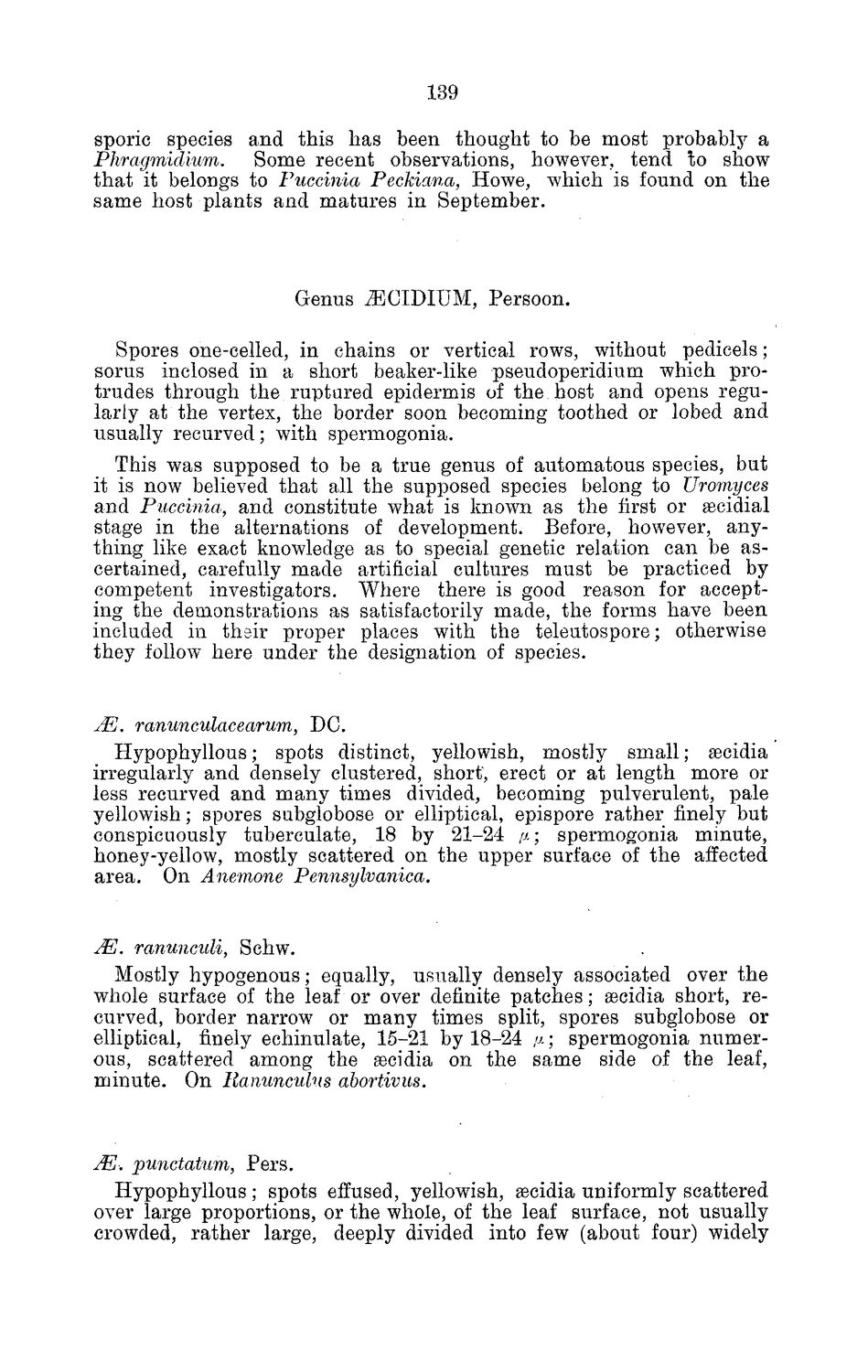| |
| |
Caption: Board of Trustees Minutes - 1884
This is a reduced-resolution page image for fast online browsing.

EXTRACTED TEXT FROM PAGE:
139 sporic species and this has been thought to be most probably a Phragmidium. Some recent observations, however, tend to show that it belongs to Fuccinia Peckiana, Howe, which is found on the same host plants and matures in September. Genus ^BCIDIUM, Persoon. Spores one-celled, in chains or vertical rows, without pedicels; sorus inclosed in a short beaker-like pseudoperidium which protrudes through the ruptured epidermis of the host and opens regularly at the vertex, the border soon becoming toothed or lobed and usually recurved; with spermogonia. This was supposed to be a true genus of automatous species, but it is now believed that all the supposed species belong to Uromyces and Puccinia, and constitute what is known as the first or secidial stage in the alternations of development. Before, however, anything like exact knowledge as to special genetic relation can be ascertained, carefully made artificial cultures must be practiced by competent investigators. Where there is good reason for accepting the demonstrations as satisfactorily made, the forms have been included in thsir proper places with the teleutospore; otherwise they follow here under the designation of species. M. ranunculacearum, DC. Hypophyllous; spots distinct, yellowish, mostly small; secidia irregularly and densely clustered, short, erect or at length more or less recurved and many times divided, becoming pulverulent, pale yellowish; spores subglobose or elliptical, epispore rather finely but conspicuously tuberculate, 18 by 21-24 /x; spermogonia minute, honey-yellow, mostly scattered on the upper surface of the affected area. On Anemone Pennsylvanica. M. ranunculi, Schw. Mostly hypogenous; equally, usually densely associated over the whole surface of the leaf or over definite patches; secidia short, recurved, border narrow or many times split, spores subglobose or elliptical, finely echinulate, 15-21 by 18-24 \x; spermogonia numerous, scattered among the secidia on the same side of the leaf, minute. On Ranunculus abortivus. M-. punctatum, Pers. Hypophyllous; spots effused, yellowish, secidia uniformly scattered over large proportions, or the whole, of the leaf surface, not usually crowded, rather large, deeply divided into few (about four) widely
| |